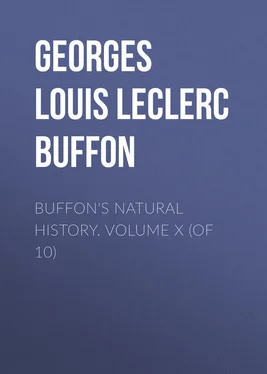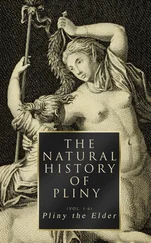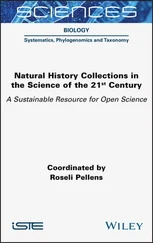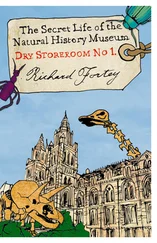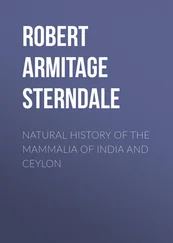Georges Buffon - Buffon's Natural History. Volume X (of 10)
Здесь есть возможность читать онлайн «Georges Buffon - Buffon's Natural History. Volume X (of 10)» — ознакомительный отрывок электронной книги совершенно бесплатно, а после прочтения отрывка купить полную версию. В некоторых случаях можно слушать аудио, скачать через торрент в формате fb2 и присутствует краткое содержание. Издательство: Иностранный паблик, Жанр: foreign_antique, foreign_prose, на английском языке. Описание произведения, (предисловие) а так же отзывы посетителей доступны на портале библиотеки ЛибКат.
- Название:Buffon's Natural History. Volume X (of 10)
- Автор:
- Издательство:Иностранный паблик
- Жанр:
- Год:неизвестен
- ISBN:нет данных
- Рейтинг книги:5 / 5. Голосов: 1
-
Избранное:Добавить в избранное
- Отзывы:
-
Ваша оценка:
- 100
- 1
- 2
- 3
- 4
- 5
Buffon's Natural History. Volume X (of 10): краткое содержание, описание и аннотация
Предлагаем к чтению аннотацию, описание, краткое содержание или предисловие (зависит от того, что написал сам автор книги «Buffon's Natural History. Volume X (of 10)»). Если вы не нашли необходимую информацию о книге — напишите в комментариях, мы постараемся отыскать её.
Buffon's Natural History. Volume X (of 10) — читать онлайн ознакомительный отрывок
Ниже представлен текст книги, разбитый по страницам. Система сохранения места последней прочитанной страницы, позволяет с удобством читать онлайн бесплатно книгу «Buffon's Natural History. Volume X (of 10)», без необходимости каждый раз заново искать на чём Вы остановились. Поставьте закладку, и сможете в любой момент перейти на страницу, на которой закончили чтение.
Интервал:
Закладка:
On the other hand, the tigers of America, which we have indicated by the names of jaguars, couguars, ocelots, and margais, though different in species from the panther, leopard, ounce, guepard, and serval, of the Old Continent, are, nevertheless, of the same genera. All these animals greatly resemble each other, both externally and internally; they have also the same natural dispositions, the same ferocity, the same vehement thirst for blood, and what approximates them still nearer in genus, those which belong to the same continent differ more from each other than from those of the other Continent. For instance, the African panther differs less from the Brasilian jaguar than the latter does from the couguar, though they are natives of the same country. The Asiatic serval, and the margai of Guiana, likewise differ less from one another than from the species peculiar to their own continents. We, therefore, may justly suppose, that these animals had one common origin, and that, having formerly passed from one continent to the other, their present differences have proceeded only from the long influence of their new situation. The mouffettes, or stinkards, of America, and the pole-cat of Europe, seem to be of the same genus. In general, when a genus is common to both continents the species which compose it are more numerous in the Old than in the New; but in this instance it is quite the reverse, for there are four or five kinds of pole-cats in America, while we have only one, the nature of which is inferior to that of all the rest; so that the New World, in its turn, seems to have representatives in the Old; and if we judged only from the fact, we might think these animals had taken the opposite road, and passed from America to Europe. It is the same with respect to some other species. The roe-bucks and the fallow-deer, as well as the stinkards, are more numerous, larger, and stronger in the New Continent than in the Old; we might, therefore, imagine them to be originally natives of America; but as we cannot doubt that every animal was created in the Old Continent, we must, consequently, admit of their migration from the Old to the New World, and at the same time suppose, that instead of having degenerated, like other animals, they have improved their original nature by the influence of the soil and climate.
The ant-eaters, which are singular animals, and of which there are three or four species in the New World, seem also to have their representatives in the Old. The scaly lizards resemble them in the peculiar character of having no teeth, and of being obliged to put out their tongues and feed upon ants; but if we would suppose them to have one common origin, it is strange, that instead of scales, with which they are covered in Asia, they are clothed with hair in America.
With respect to the agoutis, pacos, and other animals of the seventh genus peculiar to the New Continent, we can only compare them with the hare and rabbit, from which, however, they all differ in species. What renders their being of a common origin doubtful is, the hare being dispersed almost over every climate of the Old Continent, without having undergone any other alteration than in the colour of its hair. We cannot, with any foundation, therefore, imagine that the climate of America has so far changed the nature of our hares to so great a degree as to make them tapetis or apereas, which have no tail; or agoutis with pointed muzzles, and short round ears; or pacos, with a large head, short ears, and a coarse hair marked with white stripes.
On the whole, the coatis, the armadillos, and the sloths, are so different, not only in species, but also in genus, from every animal of the Old World, that we cannot compare them with any one; it is also impossible to refer them to any common origin, or attribute to the effects of degeneration the prodigious differences found in their nature from that of every other animal.
Thus, of ten genera, and four detached species, to which we have endeavoured to reduce all the animals peculiar to the New World, there are only two, the genus of the jaguars, ocelots, &c. and the species of the pecari, with their varieties, which can with any foundation be connected with the animals of the Old Continent. The jaguars and ocelots may be regarded as a species of the leopard or panther, and the pecari as a species of hog. After these are five genera and one detached species, namely the species of the lama, and the genera of sapajous, sagoins, stinkards, agoutis, and ant-eaters, which may be compared, though in a very distant and equivocal manner, with the camel, monkey, pole-cat, hare, and scaly lizards. There then remain four genera and two detached species, namely, the opossums, the coatis, the armadillos, the sloths, the tapir, and the cabiai, which can neither be referred nor compared to any genera or species of the Old Continent. This sufficiently proves that the origin of these animals, peculiar to the New world, cannot be attributed merely to degeneration. However, great and powerful the effects of degeneration may be supposed, we cannot, with any appearance of reason, persuade ourselves that these animals were originally the same as those of the Old Continent. It is more reasonable to imagine that the two continents were formerly joined, and that those species which inhabited the New World, because they found the climate and soil most suitable to their nature, were separated from the rest by the irruption of the sea when it divided Asia from America. This is a natural cause, and similar ones might be conceived which would produce the same effect; for example, if the sea should make an irruption from the eastern to the western side of Asia, and thus separate the southern parts of Africa and Asia from the rest of the Continent, all the animals peculiar to the southern countries, such as the elephant, the rhinoceros, the giraffe, the zebra, the orang-outang, &c. would be, relatively to the others, the same as those of South America at present are; they would be entirely separated from the animals of the temperate countries, and could not be referred to an origin common to any of the species or genera which inhabit these countries, on the sole foundation that some imperfect resemblances, or distant relations, might be observed between them.
We must, therefore, to find out the origin of these animals, turn back to the time when the two continents were not separated, and refer to the first changes which happened on the surface of the globe. We must, at the same time, place before our view the two hundred species of quadrupeds as constituting thirty-eight families; and although this is not the state of nature, such as it is come down to us, and as we have represented it, but, on the contrary, a much more ancient state, which we can only attain by inductions and relations nearly as fugitive as time, which seems to have effaced their traces, we have endeavoured, by facts and monuments still existing, to return to those first ages of nature, and to exhibit those epochas which appear to be most clearly indicated.
AND PROPERTIES OF MINERALS, VEGETABLES, &c.
LIGHT, HEAT, AND FIRE
ALL the powers of Nature with which we are acquainted, may be reduced to two primitive forces; the one which causes weight, and that which produces heat. The force of impulsion is subordinate to them; it depends on the first for its particular, and on the latter for its general effects. As impulsion cannot exercise itself but by the means of a spring, and the spring only acts by virtue of the force which approximates the remote parts, it is clear, that to perform its power it has need of the concurrence of attraction: for if matter ceased to attract, if bodies lost their coherence, every spring would be destroyed, every motion intercepted, and every impulsion void; since motion cannot transmit itself from one body to another but by elasticity, it is demonstrable, that one body absolutely hard and inflexible, would be absolutely immoveable, and entirely incapable of receiving the action of another. Attraction being a general and permanent effect, impulsion, which in most bodies is neither constant nor fixed, depends on it as a particular effect; for, if all impulsion were destroyed, attraction would still equally subsist and act; it is, therefore, this essential difference which makes impulsion subordinate to attraction in all inanimate and purely passive matter.
Читать дальшеИнтервал:
Закладка:
Похожие книги на «Buffon's Natural History. Volume X (of 10)»
Представляем Вашему вниманию похожие книги на «Buffon's Natural History. Volume X (of 10)» списком для выбора. Мы отобрали схожую по названию и смыслу литературу в надежде предоставить читателям больше вариантов отыскать новые, интересные, ещё непрочитанные произведения.
Обсуждение, отзывы о книге «Buffon's Natural History. Volume X (of 10)» и просто собственные мнения читателей. Оставьте ваши комментарии, напишите, что Вы думаете о произведении, его смысле или главных героях. Укажите что конкретно понравилось, а что нет, и почему Вы так считаете.
